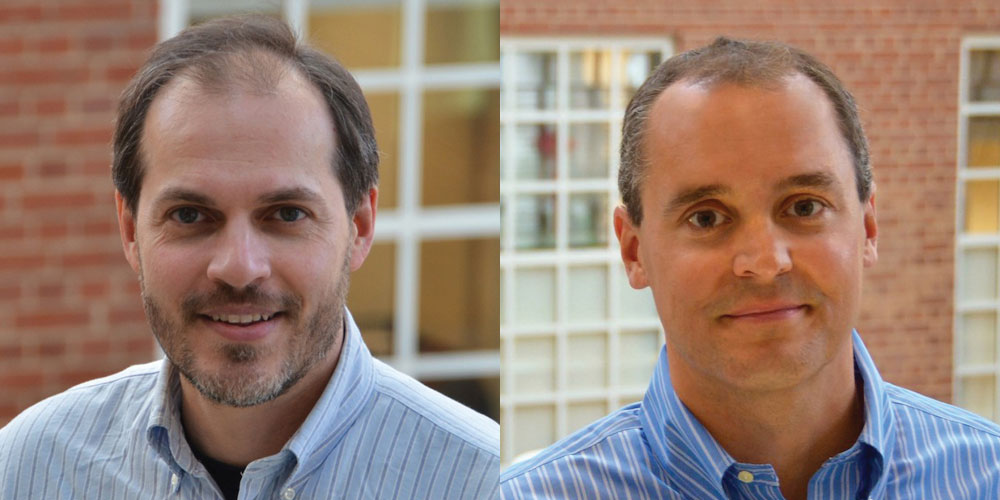The notion of climate change evokes images of hurricanes and flooding, rampant wildfires, and other extreme weather events ...
... but its complex financial and public health effects, while less obvious, can inform how government and market forces react to our planet’s changing climate.

Jason West, PhD and Gregory Characklis, PhD
Jason West, PhD, professor of environmental sciences and engineering at the Gillings School, uses sophisticated computer models of the atmosphere to examine the link between climate change and air pollution. By analyzing how modeled changes in air pollution affect global populations, West’s lab provided one of the first comprehensive glimpses of how climate change and air pollution affect public health globally.
“Climate change and air pollution are interrelated, and they are more important for global public health than people appreciate,” says West, noting that ambient air pollution contributes to about 4.5 million premature deaths worldwide each year – about 1 of every 13 deaths globally — and is a risk factor for increased mortality from heart attacks. Alternatively, stroke, lung cancer and chronic obstructive pulmonary disease.
Because greenhouse gases and air pollution are emitted by the same sources, West says, there are opportunities to address climate change — such as energy efficiency and moving away from coal as an energy source — that improve air quality at the same time.
“The train has left the station. Even as we reduce greenhouse gas emissions, we are going to continue experiencing the impacts of climate change for many years to come, and one of the biggest questions is, how do we adapt most effectively?”

West’s models suggest that a significant global effort to reduce climate change could avoid about 500,000 premature deaths by 2030, and more than 2 million by 2100, mainly from reductions in air pollutants emitted by the same sources. His research also indicates that the benefits of these health improvements would exceed the costs of reducing greenhouse gas emissions.
“By taking action to reduce greenhouse gas emissions, we are also reducing air pollution and improving human health,” West says. “It’s important to think about strategies that do both.”
While many climate-change strategies are geared toward mitigation, Gregory Characklis, PhD, William R. Kenan Jr. Distinguished Professor of Environmental Sciences and Engineering is working toward solutions that focus on adaptation. As director of the Center on Financial Risk in Environmental Systems, Characklis and his team develop computer models that analyze the risks of extreme weather events like droughts and flooding, and what steps in terms of improved infrastructure and regulatory systems can be taken to adapt to these changes.
“The train has left the station. Even as we reduce greenhouse gas emissions, we are going to continue experiencing the impacts of climate change for many years to come, and one of the biggest questions is, how do we adapt most effectively?” he says. “In order to determine that, we have to better understand the risks: what impacts is climate change likely to have, how often and how severe those impacts are likely to be, and what actions can we take to limit the adverse effects?”
Water utilities, for example, are weighing how to address increasingly frequent droughts and hot weather that lead to demand spikes, while remaining financially stable so they can continue serving communities’ needs. Building new reservoirs comes with high costs and environmental impacts, alternatively more conservation is both less expensive and more environmentally friendly but can reduce revenues and lead to financial instability for a utility.
“We are trying to remove disincentives for doing the right thing,” says Characklis, who recommends a flexible approach that combines reserve funds, conservation, pricing adjustments, and new forms of financial insurance to protect against losses from extreme events. “There is no silver bullet. It’s a layered solution.”




.jpg)
